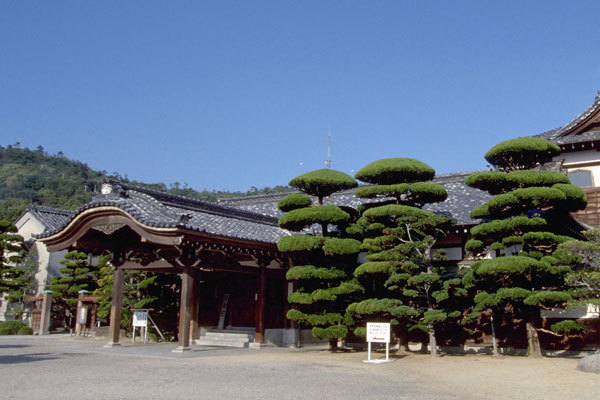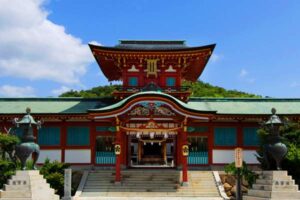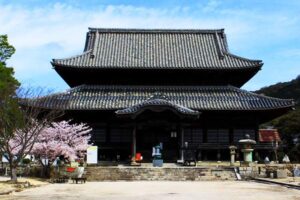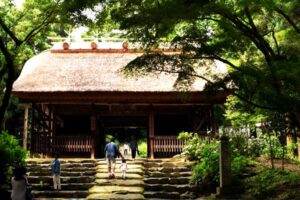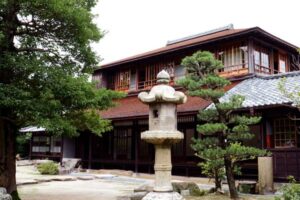Family treasure trove
Mohri House
From Daimyo’s Castle to Duke’s Mansion
Until the late nineteenth century, the Mohri clan were feudal lords (daimyo) who controlled all of modern-day Yamaguchi from their family seat at Hagi Castle on the Sea of Japan. As Japan moved towards a more modern, centralized form of government with the Meiji Restoration, most of the daimyos’ castles were destroyed to prevent them from revolting. Along with many other castles throughout Japan, the Mohri clan’s Hagi Castle was torn down in 1874 because it was a relic of the old regime that the new Meiji government was intent on sweeping aside.
That meant that when political stability finally returned to Japan, the Mohri family—despite having a mansion in Tokyo—had no suitably grand house to live in in their own ancestral lands. Duke Mohri Motonori decided to build himself a new main residence in Yamaguchi in 1892, but construction was delayed by a series of wars. Building work finally got under way in 1912, and the mansion was finished by 1916.
The mansion was designed by the Japanese architect Hara Takesaburo. A large and complex structure, the way it combines traditional, high-quality materials with all the most up-to-date conveniences defines it as a masterpiece of modern Japanese architecture. Of a total of sixty rooms, just two are Western-style.
Two Family Crests
Throughout the mansion, you will encounter the two crests of the Mohri clan. If you look up as you enter the porte-cochère, you will see both the ichi-ni-mitsuboshi (a single horizontal line above three circles) and the omodaka (three-leaf arrowhead). These crests are repeated throughout the house on everything from lighting fixtures to sliding door pulls.
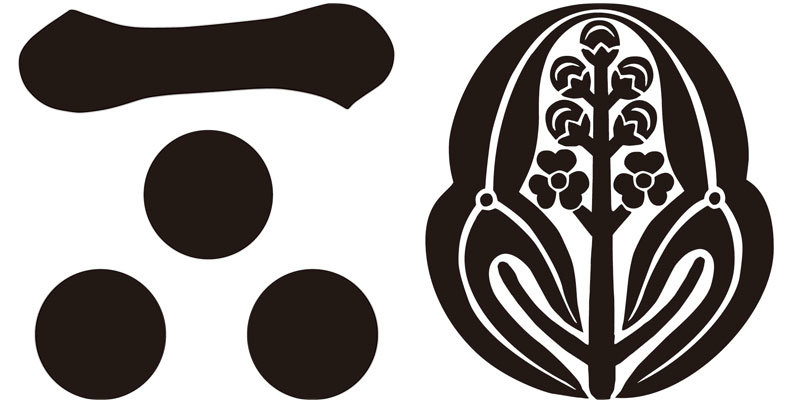
Photo:The two crests of the Mohri clan
Precious Woods and Ancient Trees
The ceiling panels of the porte-cochère are made of zelkova with a beautiful grain, and the whole house is full of rare and precious woods that communicate the wealth and status of the Mohri family. The floor of the first corridor in the house, for example, is made of two slabs of Taiwanese zelkova, each around eight meters long and 1.5 meters wide. For the pillars and the lateral beams, hinoki cypress from Kiso is used. Meanwhile, the sliding doors in the reception rooms are made of Yakusugi, 1,000-year-old cedar from the island of Yakushima.
A Guest Wing Fit for an Emperor
The grandest section of the house—and the only part that is two stories high—is the guest wing (), which was built specifically to host visits from important people, including even the emperor. It consists of three linked reception rooms (ohiroma) with intricate coffered ceilings. A discreet passage leads from the reception room to the guest bedroom behind enabling the emperor or other important visitors to move from private to public space without encountering anyone else. The mansion was inhabited for fifty years, from 1916 to 1966. Over that time it received a total of three imperial visits, one from Emperor Taisho and two from Emperor Showa (Hirohito).

Photo:Kyakuma-to
Room with a View
The second story of the guest wing is reached by way of a massive staircase, with three landings and steps made of a single block of hinoki cypress each. More modest in scale and casual in design, this upper floor with its magnificent view over the garden is where the guests came to relax.
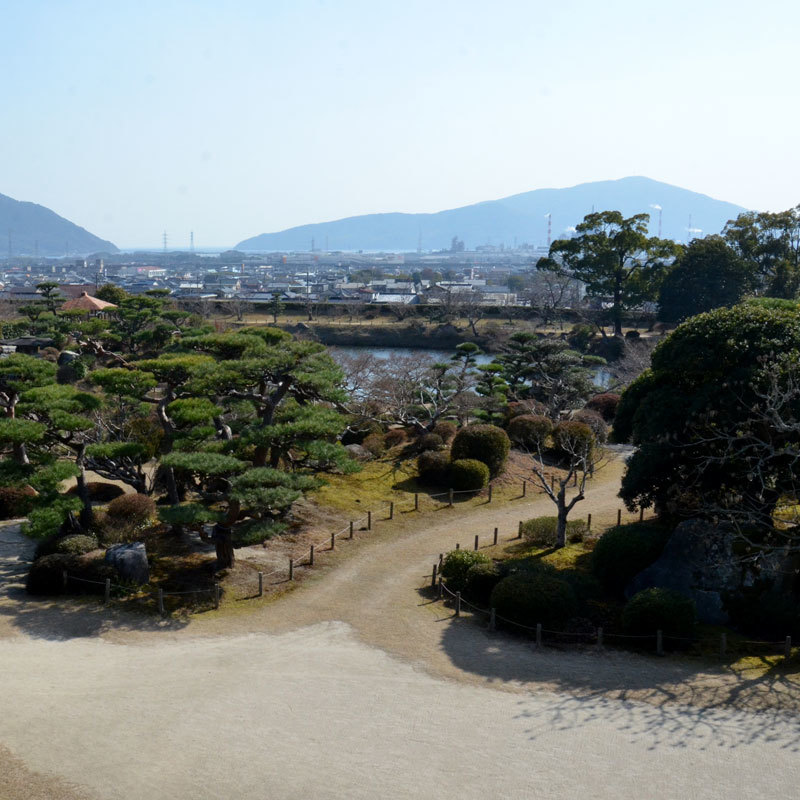
Photo:Landscape seen from the second floor
Things to Look Out for in the House
The Mohri Principal Residence was built in the early twentieth century just as Japan was establishing itself as one of the world’s great powers. As a result, the house incorporates a range of modern features that were highly unusual for the time.
New Technologies
The innovations start literally as soon as you arrive. For example, the great gate at the foot of the drive is built on a cement foundation—cement was still a novel material in Japan at the time. The house was also the first in the region to have a telephone, which is why the last four digits of the residence’s telephone number even today are 0001. An American-made home generator provided electricity, and there was a boiler to provide hot water.
Unusual Imports
In sharp contrast to the closed country under the shogunate, post-1868 Japan was very much plugged into the global trade network. This is reflected in the fittings of the Mohri Principal Residence. For example, all the lighting fixtures (which incorporate the family’s floral crest) were custom made in Germany.
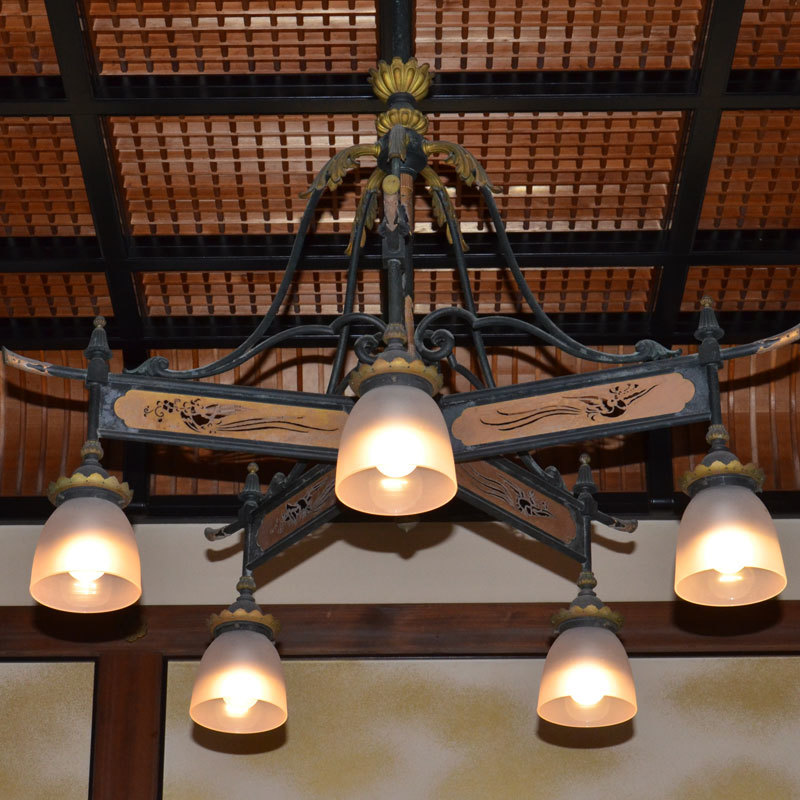
Photo:The lighting fixtures
Extravagances and Experiments
Plate glass was still a novelty in Taisho period (1912–26) Japan. Having a lot of glass windows was thus one way to project wealth and status. The two garden-facing floors of the guest wing of the Mohri Principal Residence have no less than fifteen windows. And in a very unusual—and rather impractical—touch, the amado shutters that are supposed to protect from wind and rain are actually inside rather than outside the windows! A close look at the glass of the windows reveals a certain number of bumps, bubbles, and other irregularities. This is probably because the glass was handmade—first blown, then rolled out flat—rather than today’s machine-made float glass.

Photo:Glass windows
Huge Rocks and Ancient Trees
An enormous rock sits beside a Japanese sago palm in the inner garden of the guest wing. For practical reasons, this rock had to be installed first, and then the house built around it! The unpapered sliding doors in the guest wing are made of Yakusugi, Japanese Yakushima cedar from trees over 1,000 years old.

Photo:The inner garden
Mohri Museum
Family Treasure Trove
As one of Japan’s most important feudal families for many centuries, the Mohri clan accumulated many treasures. The Mohri Museum has a collection of some 20,000 items, which are displayed in a series of rotating exhibitions throughout the year.
Although most famous for its four National Treasures, the museum contains many other interesting and valuable pieces. For instance, there is a famous letter written to his three sons by Mohri Motonari, the sixteenth-century daimyo under whom the clan achieved its greatest power. In the letter, Motonari advises the three of them to act in unison because “one arrow by itself can be broken, but three arrows bound tightly together cannot.”
The collection also includes a wealth of historically important documents from the latter half of the nineteenth century, when the shogunate fell into decline and eventually made way for restored imperial rule.
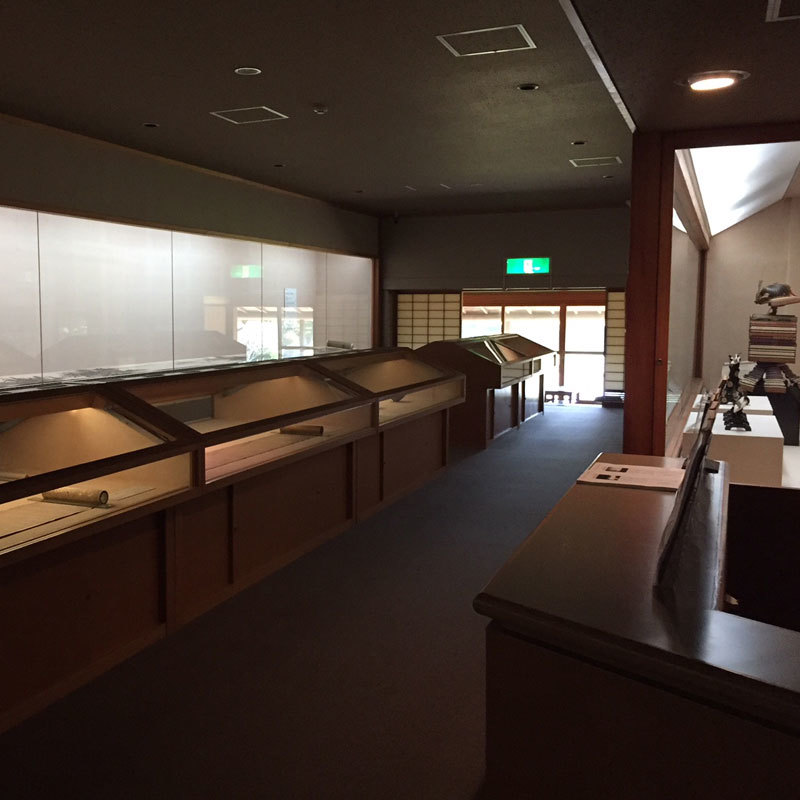
Photo:Exhibition room
Mohri Museum Treasures
The museum of the Mohri Principal Residence contains four National Treasures, the highest of all classifications for Japanese cultural artifacts.
Landscape of the Four Seasons (Shikisansuizu) is the work of the celebrated ink painter Sesshu Toyo (1420–1506). From right to left, the 16-meter-long scroll shows spring, summer, autumn, and winter. The different seasons can be identified through specific visual cues: plum blossoms for spring, seaside scenes for summer, village festivals for autumn, and snow for winter.
Dating from the late Kamakura period (1185–1333), the koshigatana is a short sword 26.5 centimeters in length that a samurai would wear pushed directly into their belt as a backup weapon to their long sword. Although there is no inscription, the workmanship suggests that the sword was made in Taima near Nara.
The Collection of Waka Poems from Past to Present (Kokin Wakashu) is believed to date from the middle of the eleventh century in the Heian period (794–1185). Just three of the original twenty scrolls survive in full, and this is the eighth in the series. Written in a graceful, flowing hand and decorated with specks of gold dust and mica, it is a masterpiece of the kana script.
Shikiryokohongi Daikyu is a history of China. This copy was made in 1073. What makes this example special is the fact that it was copied and annotated by Oe no Iekuni, an ancestor of the Mohri family.
The Mohri Clan
Most Powerful Warlords in Western Japan
By the late sixteenth century, the Hiroshima-based Mohri clan were the most powerful warlords in the Chugoku area (the modern prefectures of Hiroshima, Okayama, Shimane, Tottori, and Yamaguchi). Under Mohri Motonari (1497–1571), the clan reached the zenith of its power, controlling a domain that stretched from the border of modern-day Okayama Prefecture in the east down to Fukuoka Prefecture in the west.
This dominance, however, was short-lived. When Motonari’s grandson Terumoto supported the losing side in the Battle of Sekigahara in 1600, the victorious Tokugawa Ieyasu punished him by reducing his domain to a quarter of its original size. Forced out of Hiroshima, the clan built a new castle in 1604 at Hagi on the Sea of Japan side of modern-day Yamaguchi Prefecture. This was the origin of the Choshu Domain also known as the Hagi Domain.
Choshu and the Meiji Restoration
The Mohri clan presided over Choshu until around 1870, when Japan’s warlords were forced to surrender their domains to the emperor, and the feudal system made way for today’s prefectural system. In the early years of the Meiji period (1868–1912), the former daimyo were made to live in Tokyo to loosen their bonds with their people and to prevent them stirring up trouble. By the late 1880s, however, things had settled down sufficiently that then-head of the family Duke Mohri Motonori could leave Tokyo and return to Yamaguchi. Motonori instructed one of his followers to find a suitable location for a grand modern residence. The place that he found was at the bottom of Mt. Tatara overlooking the plain of Hofu. It had a warm climate, a spectacular view of the Inland Sea, and was close to the port. (There was no railway until 1904.)
In 1892 Motonori gave the go-ahead and the family started buying up parcels of land and stockpiling wood. However, construction was delayed by the First Sino-Japanese War (1894–1895) and then by the Russo-Japanese War (1904–1905).
Once building work finally got under way in 1912, the house was completed in five years. As Motonori had died in 1896, Duke Mohri Motoakira (1865–1938) was the first member of the family to live in the house, taking occupancy in 1916.
この翻訳について
このサイトの解説文は観光庁の地域観光資源の多言語解説整備事業で作成しました。
Official Site
Mohri House・Garden・Mohri Museum Treasures
Information
◆Name of the historical building
Mohri House・Garden・Mohri Museum
◆TreasuresAddress
1-15-1 Tatara,Hofu City,Yamaguchi Prefecture
◆Phone number
0835-22-0001
◆Traffic access
From the north exit of Hofu Station, take the Bocho bus bound for Amidaji Temple and get off at the Mouri Hontei Iriguchi bus stop.
It takes about 6 minutes.
◆Parking areas
Available
◆Barrier-free toilet
Available(Restroom at parking lot)
Detail: Yamaguchi Prefecture Tourism Federation website “Come to Yamaguchi” barrier-free information page
◆Mohri Principal Residence Garden Opening hours
9:00a.m. ~ 17:00 p.m. (Last entry is a 16:30 p.m.)
◆Closing
Open days a week, open all year seven round
◆Admission fee
Adult: \500
Elementary and junior high school students: \250
◆Mohri Museum treasures Opening hours
9:00a.m. ~ 17:00 p.m. (Last entry is a 16:30 p.m.)
◆Closing
12/22〜31,Exhibition change period
◆Admission fee
Adults: \900
Elementary and junior high school students: \250
【During the exhibition of national treasures】
Adults: \1,300
Elementary and junior high school students: \250
Mouri Garden/Mouri Art Museum combined ticket
Adult: \1,200
Elementary and junior high school students: \250
【During the exhibition of national treasures】
Adult: \1,500
Elementary and junior high school students: \250
1)10% discount for adults in groups (20 people or more)
2)Elementary, middle and high school students in the city receive discounts for school events. Reservation required.
3)Those with a disability certificate will be charged half the price above.
4)Welfare facility users can enter for half the price listed above if they enter as part of a group sponsored by the facility.
Group discounts are not available for 3) and 4) above. If both apply, please choose one.
